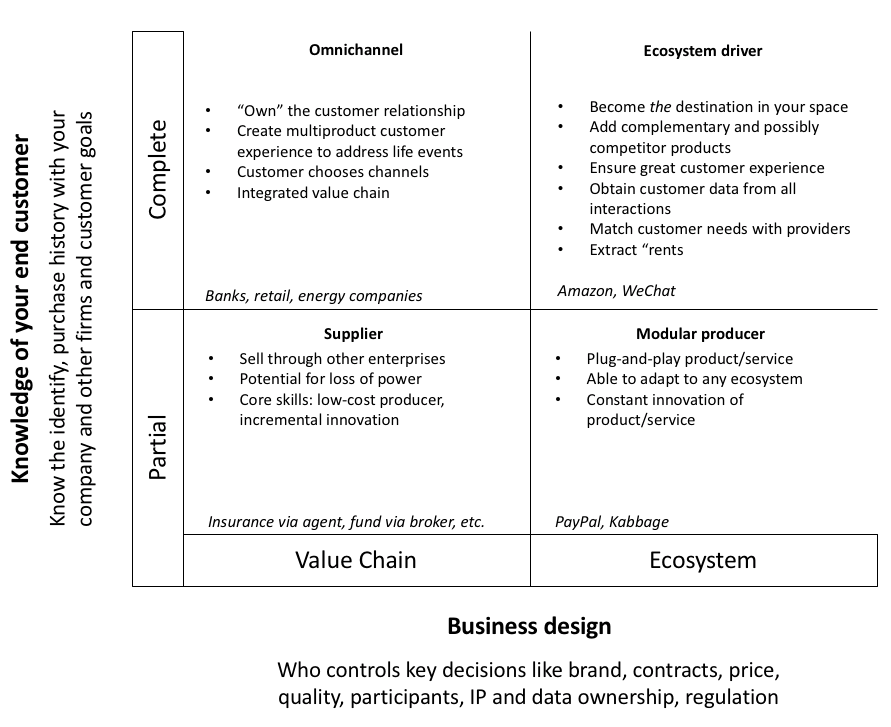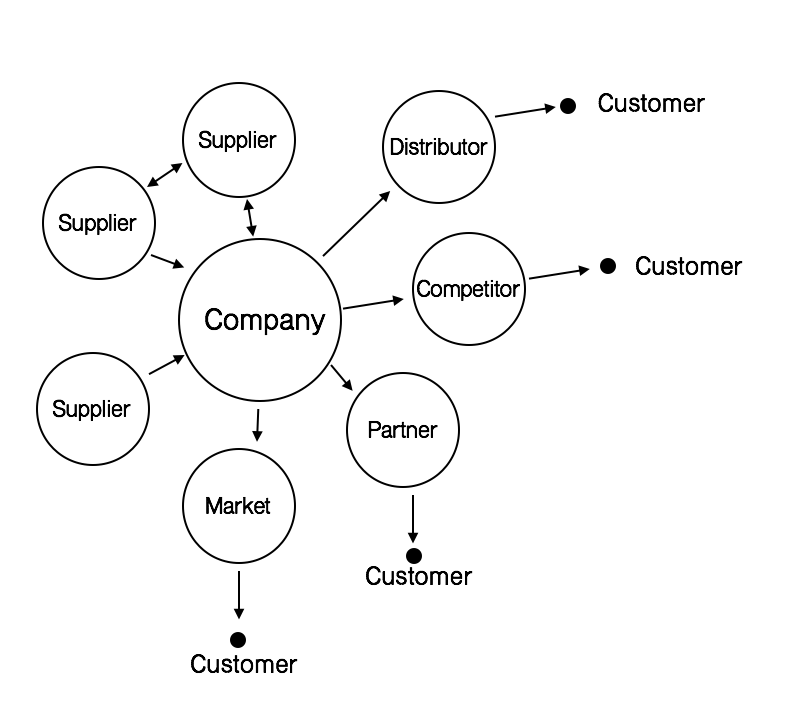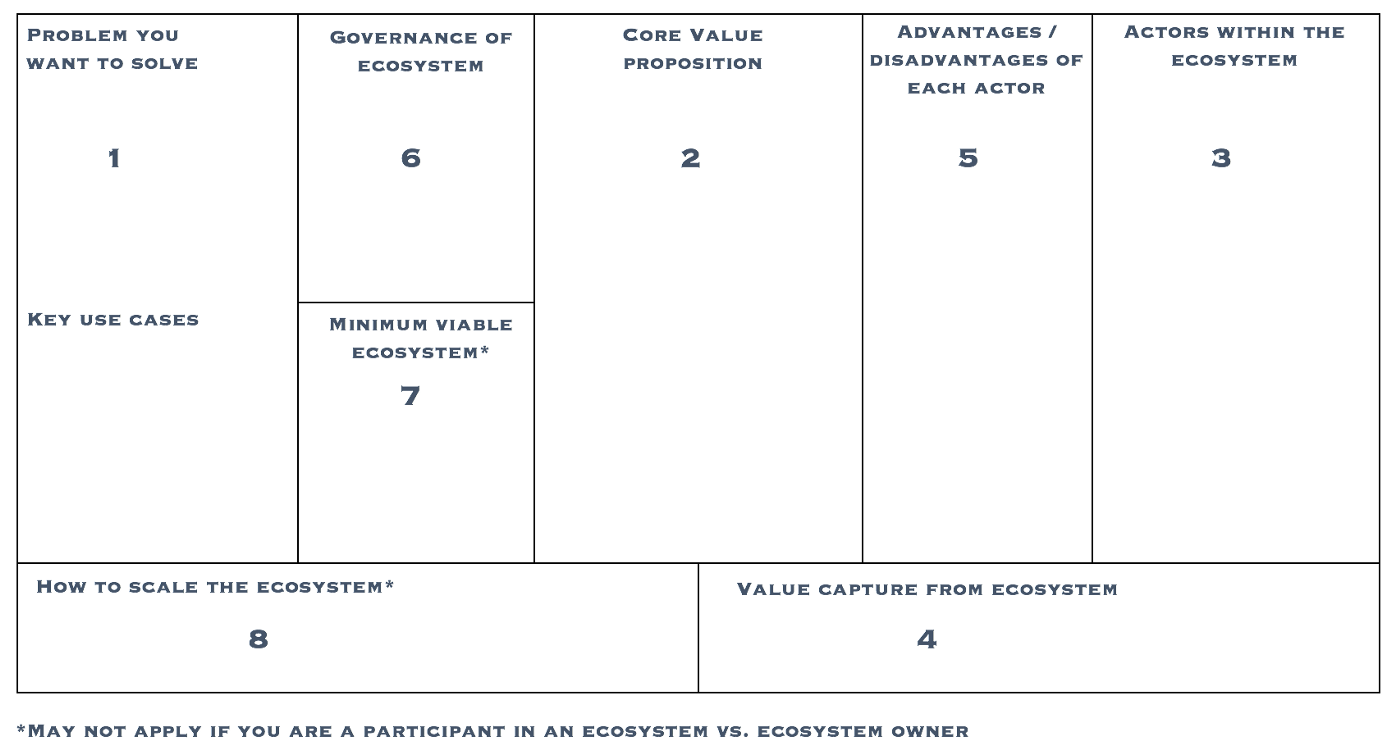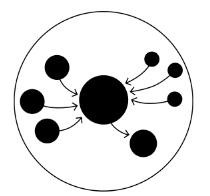Your business ecosystem will never be the same again

Michael Sribney
Digital Product and Experience Director

Michael Sribney
Digital Product and Experience Director
Whether we like it or not, we are all connected. COVID-19 has demonstrated with ruthless efficiency the fact that what happens in one corner of the globe can impose a rapid and significant effect on people and organisations across the world.
The way we conduct business with one another is no different. Enabled by technology that is cheaper, easy to use and insanely connected, businesses are more heavily connected than ever before.
As far back as 2011, Marcus Andreessen wrote his famous Wall Street Journal article, ‘Why Software is eating the world’, where he contemplated that technology had reached a stage where it was now affordable for almost anyone, anywhere to transform industries on a global scale.
Andreessen’s hypothesis has been validated by the myriad of technology companies who, without having a physical product have emerged to disrupt some of the most established industries and companies.
Amazon continues to eat up brick-and-mortar retailers, LinkedIn has crippled the recruitment industry, Airbnb has taken a massive chunk out of the hotel market and Uber has quashed the insuler taxi industry without owning a single cab!
A big part of the success of these organisations is the role they play within their business ecosystem where they orchestrate the exchange of value between buyers, sellers and a range or suppliers. The business ecosystems as Andreessen knew back in 2011 have transformed even further, resulting in rapid and massive disruption on a global scale.
The demand chain is broken
In 2018, Google VP, Chet Kapoor, exclaimed ‘The demand chain is broken’. He explained how the traditional channels businesses use to attract and satisfy demand are changing and that enterprises should embrace digital ecosystems to keep pace.
Some statistics that Kapoor mentioned to support his claim included:
- 46% of consumers use only digital channels to conduct their banking
- 20–25% of American malls will close within 5 years
- 61% of people aged 18–29 primarily watch TV via streaming
Additionally, Kapoor mentions how businesses who are becoming successful are focusing their channel work on ecosystems.
79% of top performers indicate they participate in a digital ecosystem vs. 49% for typical performers and 24% for trailing performers.
Embracing digital ecosystems
The coronavirus pandemic has resulted in hundreds of thousands of businesses across the globe to either shut down entirely or being forced to move their workforce from physical offices, to a virtual office. The speed at which organisations have been forced to adopt this way of working has been a wake-up call to the lagards who have put off genuine digital transformation. I only hope the impact of these sudden protective measures have not dealt a blow these companies will never recover from.
I expect one of the after effects of the pandemic is that more businesses will wake up to the benefits of digitally enabling their operations to have less of a dependance on the need for physical storefronts and offices. Unsurprisingly, some companies may even make the decision to adopt remote ways of working permanently.
This is a time for making choices.
This shift will accelerate the decoupling of the traditional value chain and accelerate the growth of organisations as player within digital ecosystems.
Organisations both public and private will need to make decisions around what their go forward business model will be and the role they will play within their respective business ecosystem.
So, what is the business ecosystem you play in and what is your role?
In the video above, Kapoor notes that ecosystems comes in two flavours: own an ecosystem or participate in an ecosystem.
In Weill and Woerner’s book, What’s your digital business model?, they outline how digitization is moving companies’ business models from value chains to digital ecosystems. They also provide a framework to help identify where your business model may sit across the continuum between value chain focused vs. ecosystem driven.

Companies who embrace a business model that is ecosystem driven will need to evolve from operating like this:
To operating something like this:

Defining your business ecosystem in under 10 steps:
To help define a picture of the business ecosystem you operate in and the role you intend to play, I’ve created a canvas to guide you through the key questions worth considering.
This canvas and the accompany steps will help you quickly evaluate your current situation and then draft up a future state vision of the desired ecosystem and role you wish to operate within.
As you’ll see below, taking the time to go through this process will uncover questions you may have never considered before that might be the catalyst to take your business in an entirely new direction.
In creating the canvas below, it is worth giving credit to the design thinking playbook, for inspiring this version of the canvas. I’ve aimed to build out a canvas that goes deeper into particular questions and considerations that will be pivotal in designing a view of your ecosystem that will prompt deep thought, debate and ultimately, action!
The business ecosystem canvas:

Now that you have the canvas, here is a step-by-step process you might follow as you progress through each section:
- Outline the problem you want to solve. The answer to this will depend on your target customer, business model and view of your participation in the ecosystem. This could also be stated as a problem within a system. To help focus things, you may want to consider selecting some high value use cases as the focus of the exercise.
- Define the value proposition that is in response to this problem.
- Describe the actors in the ecosystem. Who are the actors that matter most and what role do they play within the ecosystem?
- Map out the actors in an ecosystem map — start with a simple / circular view of your ecosystem to understand all the players and the relationships between one another. Then chart where value streams flow between the various actor

- Advantages / disadvantages of each actor — With all the actors and value streams now mapped, step back and consider the advantages and disadvantages across each actor collaborating in the network. This can help to identify where new actors my be worth considering and where existing actors may be worth eliminating. This will no doubt also lead you to further question how your role within the ecosystem might change.
- How is your ecosystem governed? This may be largely driven by a regulator or may involve a central organisation that orchestrates all the players in the network. Are there any contractual obligations? Are there any security requirements around information exchange within the ecosystem?Again, your position as a participant or owner in the ecosystem will determine how you interact within the network.
- Minimum viable ecosystem — This step is more relevant to those who intend to own/orchestrate the ecosystem. Key considerations are around what the minimum success metrics look like, how you will monitor these and over what period of time. The aim of this is to understand the momentum within the ecosystem and whether it is sustainable (including your role within it).
- How to scale the ecosystem — Again, this step is more relevant to those whose aim is to own/orchestrate the ecosystem. This step involves considering the strategic and tactical options to grow and sustain the ecosystem.
- Refine your ecosystem map — Now that you have a base-line of your ecosystem, it’s time to step back and consider the following:
- What are the key pain points in the ecosystem?
- What are the areas of opportunity for improvement?
Embarking on a journey to understand what your business ecosystem looks like and your role within this ecosystem is, from my experience, a rare occurrence for many businesses.
The final word
While the practice of using customer journey mapping is common among organisations as way to identify innovation opportunities, I have observed that it is less common for a business to conduct an ecosystem mapping exercise.
Hopefully, the information and approach presented thus far have created an incentive to go through the exercise and in so doing, consider where your business model might benefit from change as well as the role you play in your business ecosystem.
If your organisation is not ready to take the leap to question your business model, there are still some tactical benefits that may result from doing this exercise, including:
- Understanding new ways of working in your ecosystem to increase the value you provide to customers and the way you work with suppliers
- Identify new technologies that may enable the ability to generate greater business value
- Establish new supplier relationships or eliminate those that provide limited value
The environment we operate in will continue to change and based on the pace of change over the past few years, will occur at an increasingly disruptive pace. To remain in the game, businesses will need to think differently about their business model and the ecosystem they operate in. In my opinion, this is critical to how organisations can become stronger amidst the repeated shocks within a volatile operating environment vs. a victim of disruption.